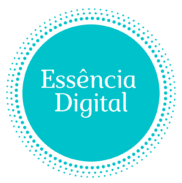A modern brand is like a person. You expect them to have the same core personality and style whether you meet them at a formal event (their website), a casual party (their Instagram profile), or in a private letter (their email newsletter). When their appearance and tone are inconsistent across these different contexts, it creates a sense of distrust and confusion.
In the digital world, your brand doesn’t live on a single website; it exists as an ecosystem across dozens of touchpoints. Achieving visual cohesion across this ecosystem is not merely a matter of aesthetic tidiness—it is a fundamental requirement for building brand recognition and trust.
A consistent visual identity reassures your audience, reinforces your message, and transforms disparate interactions into a single, unified brand experience. This guide provides a strategic framework for building and maintaining that cohesion.
The Single Source of Truth: Your Brand Style Guide or Design System
You cannot achieve consistency without a central playbook. A brand style guide (for most brands) or a more comprehensive design system (for tech companies and larger organizations) is your non-negotiable single source of truth. This document is the visual constitution for your brand, ensuring that every person who creates something for you—from an in-house designer to a freelance social media manager—is speaking the same visual language.
A robust brand style guide should clearly define:
- Brand Strategy Foundation: Briefly outline your brand’s mission, personality, and tone of voice. The visuals should be an expression of this strategy.
- Logo System: Showcase all approved logo variations (primary, secondary, logomark). Provide clear rules on sizing, placement, and, most importantly, misuse (e.g., “do not stretch, recolor, or alter the logo”).
- Color Palette: Define your primary, secondary, and accent colors with their exact codes (HEX for web, CMYK for print). Include guidance on color ratios to ensure a consistent look (e.g., “Use the primary blue for 60% of the design”).
- Typography Suite: Specify your fonts for headlines, subheadings, and body text. Include details on font sizes, weights, and line spacing to create a clear and consistent typographic hierarchy.
- Imagery & Iconography: Provide guidelines on the style of photography or illustration to be used (e.g., “candid and warm,” “high-contrast and architectural”). Include your official library of brand icons.
The “Adapt, Don’t Abandon” Principle: Platform-Native Cohesion
Every digital platform has its own unique format, culture, and set of constraints. The goal is not to force the exact same design everywhere, but to be “platform-native” without being “brand-agnostic.” Your visual identity should be flexible enough to adapt to different contexts while remaining instantly recognizable.
Consider how a single brand adapts its core elements:
- On a Website: The full visual system is deployed. The typography hierarchy is clear, the color palette is used to define sections, and the logo is prominently displayed.
- On Instagram Reels/TikTok: The brand’s primary colors and headline font are used for quick text overlays and stickers. The logo might appear briefly as a watermark. The style is energetic and adapted for a vertical, sound-on format.
- On a LinkedIn Carousel: The same brand elements are used in a more professional and data-driven context. The typography is used to create clear, informative slides, and the color palette is used to highlight key statistics.
The core DNA of the brand remains the same, even as its expression changes to fit the environment.
Building a Modular “Brand Lego Kit”: Systems Over One-Offs
To maintain consistency at scale, stop thinking in terms of creating individual, one-off visuals. Instead, build a modular system of reusable “brand Legos.” These are templates and components that empower anyone on your team to create brand-consistent assets quickly and easily.
Your “brand Lego kit” should include:
- Social Media Templates: Pre-designed templates for Instagram posts, stories, and carousels in a tool like Canva or Figma.
- Presentation Decks: A branded template in Google Slides or PowerPoint with pre-styled title slides, text slides, and chart styles.
- Email Modules: Reusable headers, footers, and content blocks for your email newsletters in your platform of choice.
- UI Components (for products): A library of pre-designed buttons, forms, and alerts that align with your brand for use in your app or website.
This systems-based approach is the secret to scaling your brand’s visual identity without diluting its integrity.
Governance and Enablement: Empowering Your Team
A style guide is useless if no one knows where to find it or how to use it. Effective brand management requires both governance (the rules) and enablement (giving people the tools and training to follow the rules).
Create a centralized, easy-to-access Brand Hub. This could be a dedicated folder in Google Drive, a project in Notion, or a page on your company intranet. This hub should be the go-to resource for:
- The latest version of your brand style guide.
- Downloadable assets (logos, icons, fonts).
- All your pre-made templates.
When onboarding new employees or freelancers, make a review of the brand hub a mandatory part of the process.
Conclusion: Cohesion is the Hallmark of a Strong Brand
In the fragmented digital ecosystem, visual cohesion is what threads all your brand’s interactions into a single, compelling story. It is the silent, persistent work that builds brand recognition, fosters a sense of trust, and creates a seamless and professional experience for your audience.
Your brand is the sum of all its parts. By creating a strong central system and ensuring every part speaks the same visual language, you build a brand that is not just seen, but instantly recognized and remembered, no matter where your audience encounters it.

